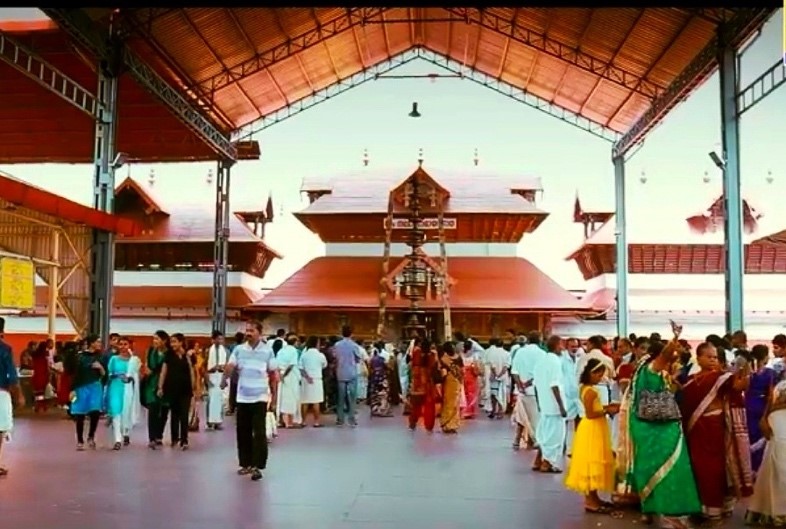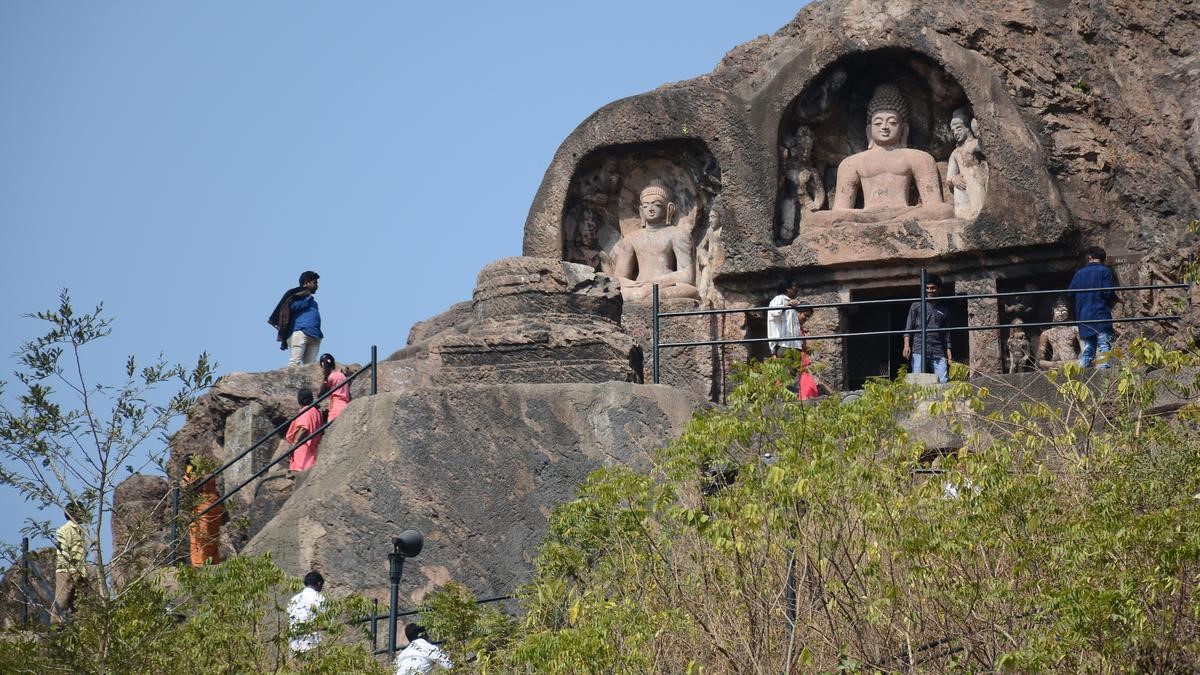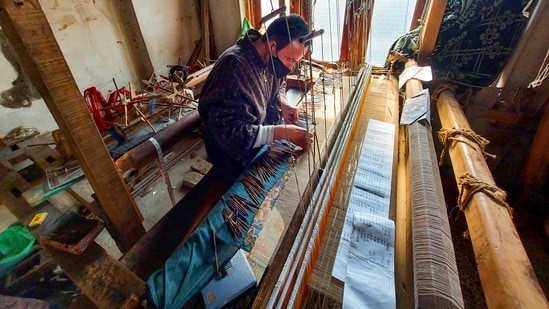Description

Copyright infringement is not intended
Context: The Hoysala temples of Belur, Halebid and Somnathapura in Karnataka have been selected as India’s nomination for UNESCO’s list of World Heritage sites for the year 2022-23.
- The ‘Sacred Ensembles of the Hoysala’ have been on UNESCO’s Tentative list since 15 April, 2014, and stand testimony to the rich historical and cultural heritage of this country.
- All the three Hoysala temples are protected monuments of the Archaeological Survey of India.
Hoysala style of architecture:
- It is often referred to as an amalgamation between the Dravidian and Indo-Aryan forms.
- Main features of Hoysala architecture:
- Mandapa, is a common feature of Hoysala architecture. It is the prayer hall that is entered through an intricately designed lintel known as the 'makaratorana.'
- This open space is supported by several pillars.
- The stone latticework is also a recurrent feature of Hoysala sculptures.
- The pillars of the Hoysala temples have four brackets at the top and are further decorated with ornamented carvings.
- The vimanams are the place where the principal deity resides. The shapes of these vimanams are either stellate (star shaped) or staggered square.
- The Salabhanjika is a common feature of Hoysala sculpture.
- The pillar images known as 'sthamba buttalikas' show the influence of the Chola art and architecture.
- The temple walls of the Hoysala Empire are speckled with events from Hindu epics, Ramayana and Mahabharata.
- The Hoysala sculpture is erotica. The nooks and niches of the temple walls have been filled with erotic themes.
About Hoysaleswara temple:
- They are also referred as the Halebidu temple, which is a 12th-century Hindu temple dedicated to Shiva.
- It is the former capital of the Hoysala Empire.
- The temple was sponsored by King Vishnuvardhana of the Hoysala Empire.
- During the early 14th century, Halebidu was twice sacked and plundered by the Muslim armies of the Delhi Sultanate from northern India.
- It is a Shaivism tradition monument, yet includes many themes from Vaishnavism and Shaktism tradition of Hinduism, as well as images from Jainism.
Kesava temple in Belur:
- Chennakeshava Temple, also referred to as Keshava, Kesava or Vijayanarayana Temple of Belur, is a 12th-century Hindu temple in Karnataka state, India.
- It was commissioned by King Vishnuvardhana in 1117 CE, on the banks of the Yagachi River in Belur also called Velapura, an early Hoysala Empire capital.
- It was repeatedly damaged and plundered during wars, repeatedly rebuilt and repaired over its history.
- It is dedicated to Vishnu.
What are World Heritage Sites?
- It is a landmark or area with legal protection by an international convention administered by the United Nations Educational, Scientific and Cultural Organisation (UNESCO).
- World Heritage Sites are designated by UNESCO for having cultural, historical, scientific or other forms of significance.
- As per the ‘Convention concerning the Protection of the World Cultural and Natural Heritage’1972, UNESCO seeks to encourage the identification, protection and preservation of cultural and natural heritage around the world considered to be of outstanding value to humanity.
- As of July 2021, a total of 1,154 World Heritage Sites (897 cultural, 218 natural, and 39 mixed properties) exist across 167 countries. With 58 selected areas, Italy is the country with the most sites on the list.
- Categories: A World Heritage Site can be either cultural or natural areas or objects which are inscribed on UNESCO’s World Heritage List for having “outstanding universal value”.
- These sites are usually considered to have cultural significance to all the people in the world, including future generations.
How are they selected?
- According to The Operational Guidelines for the Implementation of the World Heritage Convention, a country must first list its significant cultural and natural sites into a document known as the Tentative List.
- The sites selected from that list move onto the Nomination File, which is then evaluated by the International Council on Monuments and Sites and the World Conservation Union.
- Any site that wasn’t first included in the Tentative List cannot be nominated.
- The two bodies then make their recommendations to the World Heritage Committee, which consists of diplomatic representatives from 21 countries.
- The committee meets each year to decide whether a nominated property can be inscribed on the World Heritage List.
- The committee makes the final decision if a site meets at least one of the ten selection criteria.
Does a site can lose its designation?
- A site may lose its designation when the World Heritage Committee determines if it is not properly maintained or protected.
- It is first placed in the list of World Heritage in Danger as the Committee attempts to find a remedy involving the local authorities. If any remedies fail, the designation is revoked.
- A country can also request the Committee to partially or fully delist a property, generally in such cases when its condition has seriously deteriorated.
How many World Heritage Sites are in India?
- There are currently 32 cultural, seven natural and one mixed World Heritage Sites in India.
- Oldest sites: Agra Fort, Ajanta Caves, Ellora Caves, and Taj Mahal made it to the list in 1983.
- Latest sites: The latest sites to be added to the list Dholavira in Gujarat, Kakatiya Rudreshwara (Ramappa) Temple in Telangana in 2021.
- There are 46 sites in the Tentative List including a group of monuments at Mandu and the historic ensemble of Orchha in Madhya Pradesh, Satpura tiger reserve, temples of Kanchipuram, temples at Bishnupur in West Bengal, and Sri Harimandir Sahib in Amritsar, Punjab.
Indian Properties inscribed on the World Heritage List (40)
Cultural (32)
- Agra Fort (1983)
- Ajanta Caves (1983)
- Archaeological Site of Nalanda Mahavihara at Nalanda, Bihar (2016)
- Buddhist Monuments at Sanchi (1989)
- Champaner-Pavagadh Archaeological Park (2004)
- Chhatrapati Shivaji Terminus (formerly Victoria Terminus) (2004)
- Churches and Convents of Goa (1986)
- Dholavira: a Harappan City (2021)
- Elephanta Caves (1987)
- Ellora Caves (1983)
- Fatehpur Sikri (1986)
- Great Living Chola Temples (1987,2004)
- Group of Monuments at Hampi (1986)
- Group of Monuments at Mahabalipuram (1984)
- Group of Monuments at Pattadakal (1987)
- Hill Forts of Rajasthan (2013)
- Historic City of Ahmadabad (2017)
- Humayun's Tomb, Delhi (1993)
- Jaipur City, Rajasthan (2019)
- Kakatiya Rudreshwara (Ramappa) Temple, Telangana (2021)
- Khajuraho Group of Monuments (1986)
- Mahabodhi Temple Complex at Bodh Gaya (2002)
- Mountain Railways of India (1999,2005,2008)
- Qutb Minar and its Monuments, Delhi (1993)
- Rani-ki-Vav (the Queen’s Stepwell) at Patan, Gujarat (2014)
- Red Fort Complex (2007)
- Rock Shelters of Bhimbetka (2003)
- Sun Temple, Konârak (1984)
- Taj Mahal (1983)
- The Architectural Work of Le Corbusier, an Outstanding Contribution to the Modern Movement (2016)
- The Jantar Mantar, Jaipur (2010)
- Victorian Gothic and Art Deco Ensembles of Mumbai (2018)
Natural (7)
- Great Himalayan National Park Conservation Area (2014)
- Kaziranga National Park (1985)
- Keoladeo National Park (1985)
- Manas Wildlife Sanctuary (1985)
- Nanda Devi and Valley of Flowers National Parks (1988,2005)
- Sundarbans National Park (1987)
- Western Ghats (2012)
Mixed (1)
- Khangchendzonga National Park (2016)
https://www.aninews.in/news/national/general-news/india-finalises-nomination-of-hoysala-temples-in-karnataka-for-world-heritage-list-2022-2320220201041301/














